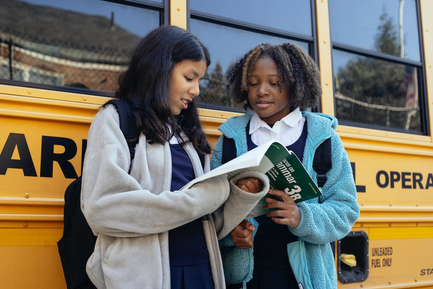
Apply to a foreign university with confidence
- Properly fulfilled documents
- Perfect motivation letter
- Support from a personal mentor
- Offers from several universities
The secondary education system in the USA — how to enroll into an American secondary school, how much does it cost, and the list of the best private secondary schools
Free consultation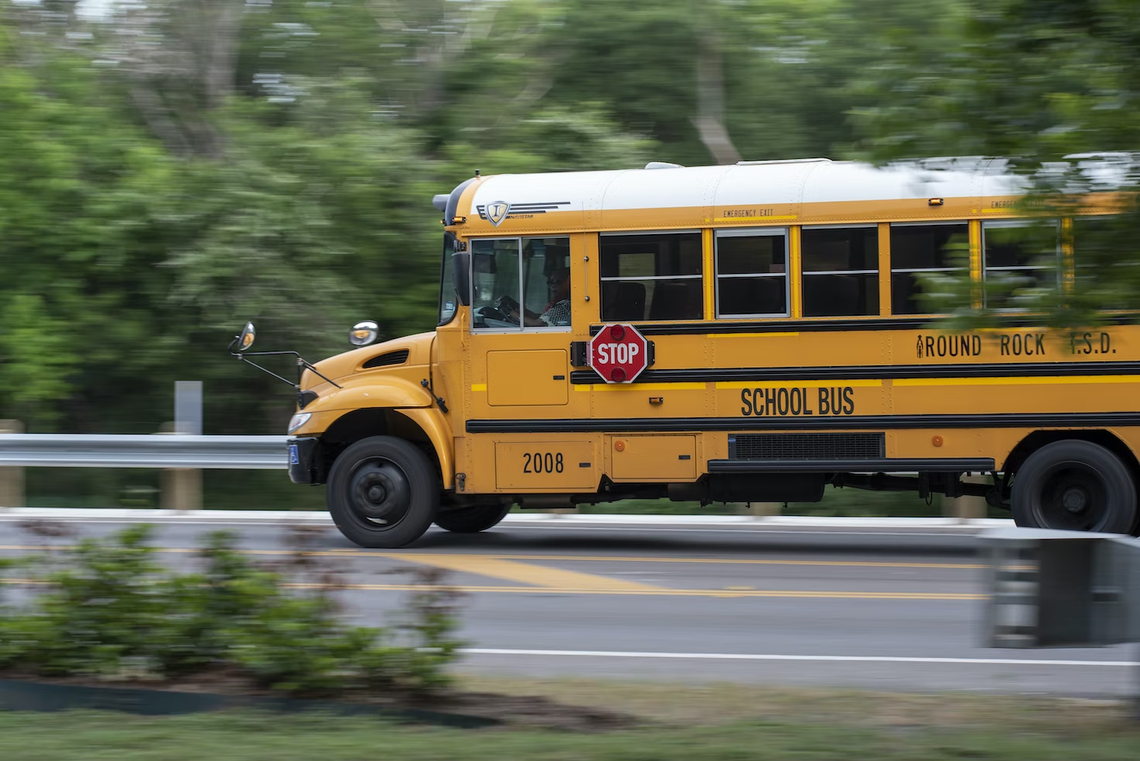
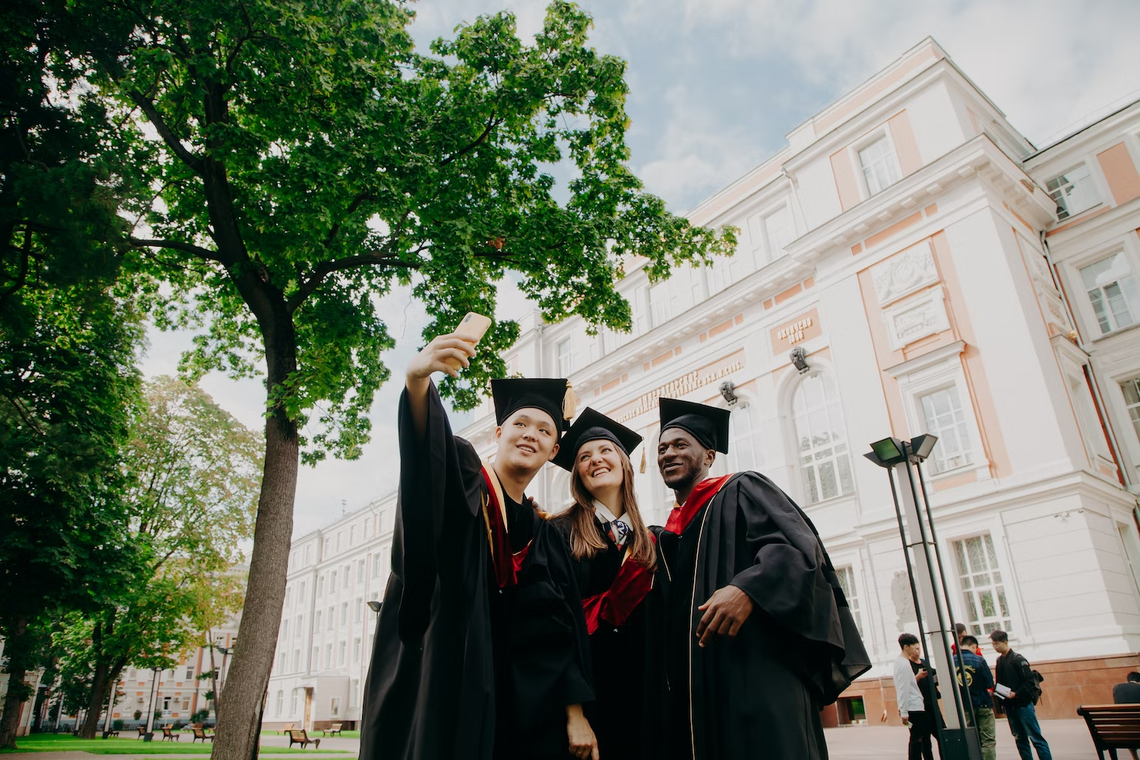
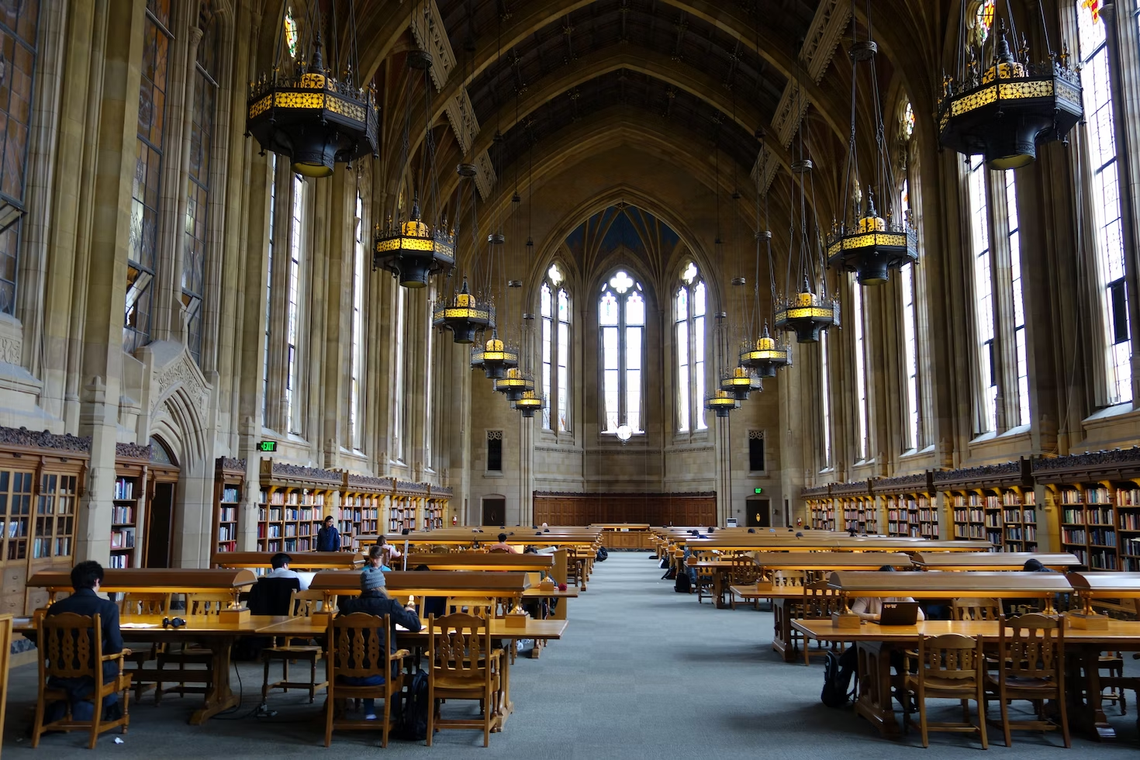

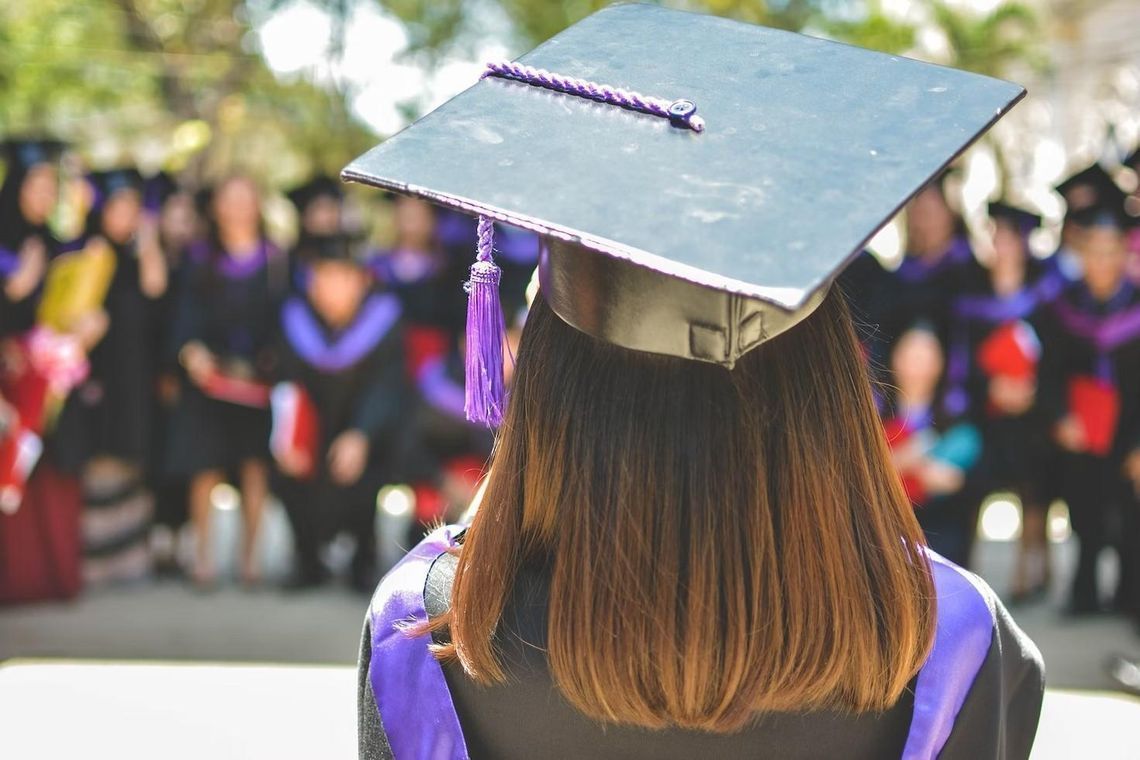




Secondary education in the United States lasts 13 years. Such a scheme is usually called "K-12", where "K" stands for kindergarten, which is mandatory here, and "12" is the last, 12th grade. Thus, K5-school provides elementary education, K8-school — secondary, etc.
Many schools specialize in specific stages: primary, secondary, or high school, as a result American students often change schools as they get educated. If parents want their child to go through all the stages of education in one place, they should look for a K-12 institution.
| Educational Level | Grade | Age | Final Exams |
|---|---|---|---|
| Nursery School | Pre-K | 3-4 | Kindergarten screening |
| Kindergarten | K | 4-5 | Kindergarten exit assessment |
| Elementary School / Primary School | 1-5 | 5-11 | School tests |
| Middle school / Junior High school | 6-8 | 11-14 | State exam |
| High school / Senior High school | 9-12 | 14-17 | State exam, SAT, ACT, AP |
| Type of school | Tuition cost | Accommodation cost | Guardianship | Pocket expenses | Total |
|---|---|---|---|---|---|
| Public | 3,000-10,000 USD/ Free | 13,000-15,000 USD | Free | 1,500-2,000 USD | 17,500-27,000 USD |
| Private day school | 12,000-53,000 USD | 13,000-15,000 USD | Free | 1,500-2,000 USD | 26,500-70,000 USD |
| Private boarding school | 12,000-57,000 USD | 5,000-22,000 USD | Free | 1,000-1,500 USD | 18,000-80,000 USD |
The table shows the approximate prices. Current fees should be checked on the schools' websites.
In the United States, there are public and private schools. About 80% of American children attend public schools. They are free, but not available to foreigners. The only way to study in a public school is to become an exchange student for up to 12 months in grades 9-12. In this case, training will be paid. Therefore, further, we will focus on private schools: most of them accept children and teenagers from all over the world.
There are over 34000 private schools in the USA. To make a more informed decision, you need to consider several main factors. Private schools are divided by:
Schools in the USA are usually assessed according to the following parameters:
Below is a list of the best private high schools as of 2021, according to the portal Niche.
| Name | City | Grades | Type | Tuition/year | Tuition+boarding/year |
|---|---|---|---|---|---|
| Phillips Academy | Andover | 9-12 | co-ed | 46,400 USD | 59,850 USD |
| Phillips Exeter Academy | Exeter | 9-12 | co-ed | 44,960 USD | 57,563 USD |
| St. Mark's School of Texas | Dallas | 1-12 | boys | 27,135-33,929 USD | - |
| The College Preparatory School | Oakland | 9-12 | co-ed | 48,300 USD | - |
| The Hotchkiss School | Lakeville | 9-12 | co-ed | 53,720 USD | 63,180 USD |
| Harvard-Westlake School | Los Angeles | 7-12 | co-ed | 41,300-49,550 USD | - |
| Trinity School | New York | 1-12 | co-ed | 56,665-57,230 USD | - |
| Choate Rosemary Hall | Wallingford | 9-12 | co-ed | 48,550 USD | 62,760 USD |
The average cost of tuition in a private American school is about 40,000 USD per year. However, there are more affordable options available. Many educational institutions are funded by the church, state, wealthy alumni, and various foundations. Thanks to such investments, prices can be reduced. For foreigners, the cost will still be 1.5-2 times higher than for US citizens, but it is quite possible to find a decent school for 30,000 USD or less, including food and accommodation.
| Name | City | Grades | Type | Tuition/year | Tuition+boarding/ year |
|---|---|---|---|---|---|
| Luster Christian High School | Luster | 9-12 | co-ed | - | 12,000 USD |
| Northland Scholars Academy | Dunbar | 9-12 | co-ed | 25,700 USD | 35,700 USD |
| Hillcrest Lutheran Academy | Fergus Falls | 5-12 | co-ed | 4,580-11,280 USD | 25,900 USD |
| Pillsbury College Prep | Owatonna | 6-12 | co-ed | - | 23,000 USD |
| New Mexico Military Institute | Roswell | 9-12 | co-ed | 23,870 USD | 28,230 USD |
| Freeman Academy | Freeman | 1-12 | co-ed | - | 27,551 USD |
| Michigan Lutheran High School | Saint Joseph | 9-12 | co-ed | - | 20,900 USD |
| Totino- Grace High School | Fridley | 9-12 | co-ed | 16,680 USD | 36,130 USD |
To enroll children in a public school, parents must be US residents: have a long-term visa or citizenship. Most often, schools accept students from nearby areas, exclusively at the place of registration. But there are also free-enrollment schools that don't follow this rule. It is not uncommon for families with children to first choose a suitable school, and then look for real estate in the nearby area.
There are three types of state schools: public/traditional, charter (use alternative teaching methods), and magnet (specialized schools with an inclination towards a specific field of science).
Best public primary schools:
Best public middle schools:
Best public high schools:
Source: Niche
American schools do not have a set date for the beginning of the academic year. The school starts in late August or early September and ends in May or June respectively. Winter break is the longest, it lasts 2-3 weeks. It includes Catholic Christmas and New Year. Spring break is timed to coincide with Easter and lasts about a week in March or April.
The academic year in different schools can be divided into semesters, trimesters or quarters. Each segment ends with final tests. All schools in the USA teach 5 days a week: from Monday to Friday.
Primary school begins at the age of 5-6. The first year is called kindergarten. Some schools also have pre-kindergarten groups for kids aged 3-5. Typically, primary school lasts up to grade 5, less often up to grade 4 or 6.
Formally, there are no age restrictions for foreigners — you can send a child to a private school starting from the kindergarten level. However, there are not many primary schools in the US that accept foreigners. As a rule, this option is used by those families who live in the States on a permanent basis.
There is no strict discipline in the class for the first 2 years. Children play a lot, communicate, master basic skills like counting, reading, and writing. Then the core subjects are gradually introduced. One teacher conducts classes in English, math, science, geography, and history. Special subjects such as art, music, physical education, computer science, and a foreign language (most often Spanish) are studied by schoolchildren with other teachers. Also, students are regularly taken to the library.
In most schools, grading starts in year 2. At first, a simplified ESNU scheme is often used:
Then they usually switch to a standard letter scale (from A to F) or introduce their own grading system.
Standardized tests are conducted every six months for each subject to track student’s progress and overall school performance. The teacher can use other forms of performance control at his own discretion. There are no final exams at the end of primary school in the United States.
Although there are boarding schools for elementary students (at least from grade 3) in the United States, few parents choose this option for their child at such a young age. Therefore, almost all primary schools in the United States are day schools. Children often stay at school until 6-7 pm: attend extra classes or do homework. There should also be a guardian permanently residing in the United States who is responsible for a foreign student during the rest of the time. Unlike Britain, there is no visa for parents of young children.
You must apply for elementary school almost a year before starting your studies. The typical deadlines are usually January-February. Depending on the school, the child and parents may be invited for an interview (in person or online) and/or a test day at school. During the visit, teachers look at the future student in a new environment, conduct classes in groups, and additional tests. The decision is made by March.
For kindergarten:
Additionally for school children:
The full list must be checked on the school website.
Children enter middle school (grades 6-8) at the age of 11-12. At this age, foreign students can already enroll in many private American schools.
Here, each subject is taught by a separate teacher. Between classes, which are called periods, there are short breaks 5-10 minutes long. During this time, students must reach the next class. In the middle of the day, there is a lunch break for 1-2 hours.
Middle school students have a more flexible curriculum compared to younger students. Compulsory subjects include English, mathematics (algebra and geometry), science and social sciences, history, and sports. At the same time, schoolchildren can choose the level of education: basic or advanced. In the second case, the program will be the same, but the studies will be more in-depth. Additionally, each educational institution has a list of elective courses. You can take 1-2 new disciplines annually. This can be acting, graphic design, French literature, and even the editorial office of a school newspaper. With such a system, all students get a different schedule, and there are no permanent study groups.
In middle school, students regularly write short tests on the material they have passed. The grades for these tests tend to affect the final score even more than the final test. Therefore, students should always be actively involved in the educational process. Good academic performance at the end of the year gives you the right to take more advanced courses next year.
Each school independently determines the assessment format: it can be a unique point system or a standard letter scale adopted by many schools.
| Letter grade | Percentage | Score |
|---|---|---|
| A | 90% -100% | 4.0 |
| B | 80% -89% | 3.0 |
| C | 70% -79% | 2.0 |
| D | 60% -69% | 1.0 |
| F | <69% | 0.0 |
To graduate you must get a satisfactory grade (by the standards of that particular school) grades in every compulsory subject.
There are junior boarding schools in the USA. They accept students aged 11-13. Educators usually live at the same student residence. As a rule, these are teachers or school administration staff who monitor the daily routine of schoolchildren and help them in difficult situations. In fact, they function as parents, and therefore they are called dorm parents.
Day schools sometimes organize housing with a host family, but generally require the student to have an official guardian residing in the United States.
Application deadlines are in December-January, that is 8-9 months before the start of school. However, many schools advise to make an application a couple of months earlier — interviews are scheduled as new candidates appear. Interviews (in person or via online video call) are usually conducted until February. Students receive an invitation in spring — March-April.
The full list must be checked on the school website.
The high school covers grades 9-12. Teens begin this stage at the age of 14 and graduate when they are 18. Sometimes middle and high schools are combined into one, and education lasts from grades 6-7 to 12. In this case, there are two stages: Junior High School and Senior High School.
High school is actively preparing students for entering colleges and universities. Students have two main tasks:
Also, high school students can additionally choose several courses that are interesting to them and/or will look good in the university application.
Grades in American high schools are important. Students regularly write tests, do group projects, and take lab classes. These add up to the final score in each subject and the GPA, one of the important criteria for admission to college or university. Most schools use a 4 or 5-point system along with the letter one (A-F), but there are also institutions with a 6 or even 11-point grading scale.
Some states have final exams for high school students, but their results do not influence admission to US universities. Private schools do not usually require you to take them. Instead, students concentrate on preparing for the SAT and ACT exams, which are required for admission to American universities.
Private school students can live in a boarding house or with a host family (if the school has this option). A guardian can also be found for day schools.
The boarding residence is a kind of dormitory, where each room is shared by 2-3 people. Also, the building usually has a kitchen, study area, relaxation area, and sometimes a gym. The residences are located on the school grounds, and a curator from among the teachers lives with the students, so they are always under supervision.
You can apply to most high schools until January and submit entrance test results by February (the year of the beginning of studies). However, there is a lot of competition in the top schools, so preparation for admission should begin the year or two before applying. Often, the submission of documents is divided into two stages: the first stage involves submitting basic information and paying the registration fee (this is how the school learns about your interest in admission), the second stage is dedicated to submitting documents and test results. Almost always candidates will have an interview (in person or via video call). The results come to light in March. The school announces the exact dates on its official website.
The full list must be checked on the school website.
The SSAT, or Secondary School Admission Test, is a standard exam for admission to grade 4 and up of a US private school. This is the most approachable option for international students, as the rest of the tests, as a rule, can only be taken in the USA and Canada.
The SSAT has three levels:
| Level | Grades | Duration | Cost |
|---|---|---|---|
| Elementary Level | 3-4 | 2 hours 5 minutes | 203 USD |
| Middle Level | 5-7 | 3 hours 10 minutes | 287 USD |
| Upper Level | 8-11 | 3 hours 10 minutes | 287 USD |
The test includes five sections, which differ in time and complexity for different levels:
Examples of tasks can be found here.
Foreign students can take the exam in one of two ways:
Registration on the official website.
High School is a standard American high school program. It lasts 4 years, from grades 9 to 12. During this time, you must collect the minimum number of credits established by the state for compulsory subjects. Upon successful completion, graduates receive a High School Diploma, which reflects all the courses taken and the grades for them. Some states also require a final exam, but the result is not counted towards university admission. Private schools usually forgo such exams.
High School Diploma is accepted at all universities in the USA and Canada. For admission to many universities in Europe (for example, Germany[2]) this document is not enough. Depending on the country and university, additional qualifications may be required:
Advanced Placement (AP) are university-level courses taught in high school. They can be studied in parallel with or instead of the required subjects. For example, the Advanced Microeconomics course contains all the material from the basic algebra course, so the latter is not required to be taken separately.
APs are elective courses of increased difficulty. Students are not required to include them in their curriculum, but this will be a huge advantage when entering a university. The courses and their number should be chosen, focusing on the future university and specialty. So, when applying to elite institutions like Harvard, it is recommended to have at least 7 AP courses under your belt. For universities with a lower rank, 4-5 will be enough. Some universities may transfer AP course credits.
Advanced Placement has 38 disciplines in total. Private schools usually have an average of 15. Apart from AP, there are other types of advanced courses: for example, CL (College Level) or Honors. Because of this, the total number of APs listed on the school's website may be more than 38.
| Name | City | Grade | Type | Tuition/year | Tuition+boarding/year | AP courses |
|---|---|---|---|---|---|---|
| Brophy College Preparatory | Phoenix | 9-12 | boys | 16,400 USD | - | 30 |
| The Loomis Chaffee School | Windsor | 9-12 | co-ed | 47,240 USD | 63,605 USD | 38 |
| Philips Academy | Andover | 9-12 | co-ed | 46,400 USD | 59,850 USD | 70 |
| Tabor Academy | Marion | 9-12 | co-ed | 52,950 USD | 70,250 USD | 44 |
| Blair Academy | Blairstown | 9-12 | co-ed | 46,500 USD | 66,500 USD | 54 |
| Westtown School | West Chester | 1-12 | co-ed | 41,980 USD | 65,910 USD | 37 |
| Bishop Lynch High School | Dallas | 9-12 | co-ed | 18,800 USD | - | 47 |
| Montgomery Bell Academy | Nashville | 7-12 | boys | 29,500 USD | - | 30 |
For admission to an American university, you must pass one of the standardized tests: SAT or ACT. There are several universities where this is optional, and in general, in America, there is a lot of talk about the need to abolish the test system when selecting candidates. For now, however, SAT or ACT exams are still an important part of the application. Each school has its own learning characteristics, and tests help to equalize all graduates.
SAT and ACT are similar in structure and content. It is difficult to say if one is any harder than the other. In 2019, 2.2 million people passed the SAT and 1.8 million — ACT[3]. Many students took both exams. It is generally accepted that the SAT is better at revealing mathematical abilities, while the ACT is better suited for testing language abilities. Both tests are created by private organizations and there is a fee to take them.
Although US universities actually treat all applicants equally, regardless of the previous place of study, the choice of the school still matters. If you are planning to enter a top university, it is advisable that teachers have experience in preparing applicants for universities of this level. Schools usually tell what universities their graduates enter on the websites.
The US high school programs are also recognized by other countries, but sometimes American graduates have to acquire additional qualifications in different ways.
| University | SAT average (25%-75%) |
|---|---|
| California Institute of Technology | 1530-1580 |
| University of Chicago | 1470-1570 |
| Harvard University | 1460-1580 |
| Brown University | 1420-1550 |
| Cornell University | 1390-1540 |
| Washington and Lee University | 1350-1490 |
| Amherst College | 1330-1530 |
| New York University | 1310-1510 |
| University of South Florida | 1170-1330 |
| University of Alabama | 1060-1280 |
| Brooklyn College | 1060-1240 |
| Central Michigan University | 1000-1200 |
| San Francisco State University | 950-1160 |
| Eastern Illinois University | 920-1110 |
Source: Niche
| Name | City | Grade | Type | Cost/year | Average SAT score |
|---|---|---|---|---|---|
| Ross School | East Hampton | 1-12 | co-ed | 45,000 USD | 1575 |
| The Awty International School | Houston | 1-12 | co-ed | 30,300 USD | 1525 |
| Westridge School | Pasadena | 4-12 | girls | 30,300 USD | 1490 |
| The Lawrenceville School | Lawrenceville | 9-12 | co-ed | 57,140-69,420 USD | 1490 |
| The College Preparatory School | Oakland | 9-12 | co-ed | 48,300 USD | 1483 |
| The Quarry Lane School | Dublin | 1-12 | co-ed | 41,200 USD | 1480 |
| BASIS Independent Silicon Valley | San Jose | 5-12 | co-ed | 30,700 USD | 1478 |
| Hopkins School | New Haven | 7-12 | co-ed | 44,800 USD | 1470 |
| John Burroughs School | St. Louis | 7-12 | co-ed | 29,400 USD | 1470 |
| Cistercian Preparatory School | Irving | 5-12 | boys | 19,075 USD | 1470 |
| Thomas Jefferson School | St. Louis | 7-12 | co-ed | 30,000 USD | 1460 |
Source: Private Schools Review
Students of all ages must obtain an F-1 student visa to study at an American private school. Once the candidate has been enrolled in one of the SEVP-certified educational institutions, you should request an I-20 form from the school and pay the I-901 SEVIS fee (350 USD). Then you can send an application to the nearest US consulate. Registration usually booked months in advance, so at least six months must be allocated for visa procedures. When submitting documents, students over 13 years old undergo a short interview with the consul. The visa is issued for a year and is extended as long as the child keeps the student status.
Additionally, you may need to provide:
An F-1 visa is not a guarantee of entry into the United States. The final decision is made by the CBP officer at the port of entry (for example, at American airport), after studying the documents once more. You can arrive at a maximum of 60 days before the start of training.
There is no visa to accompany students in the United States. If desired, a parent can enter the country with a child on a Type B tourist visa for a specified period. However, usually, all issues can be resolved remotely with school representatives. They will also meet the child at the airport.
60+ countries
we work with
$1,000,000 saved
by students through scholarships
6,400 offers
our students got